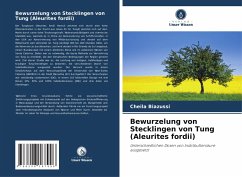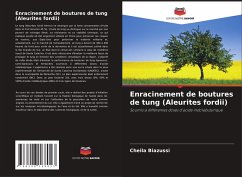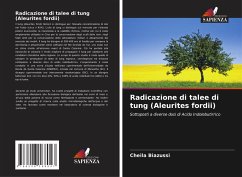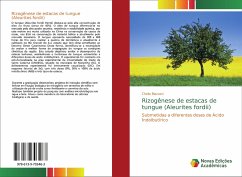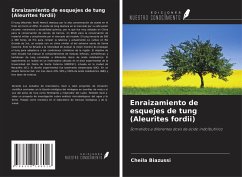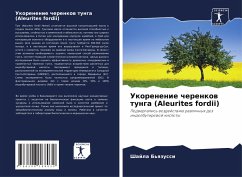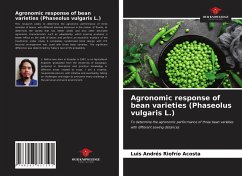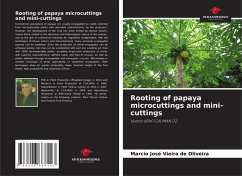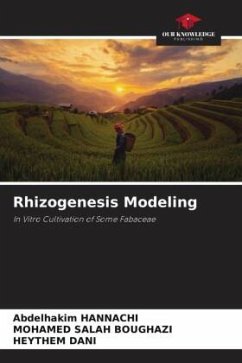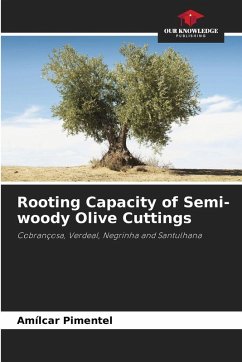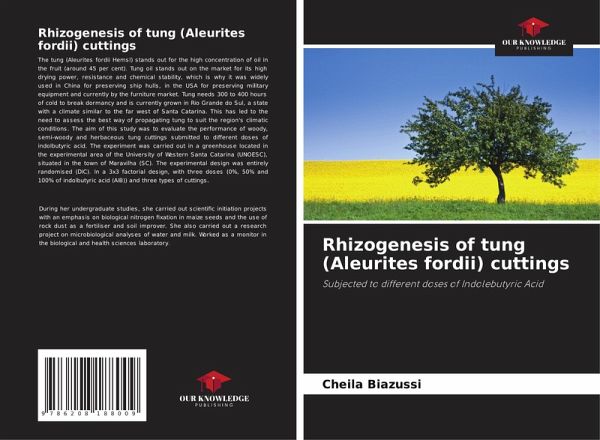
Rhizogenesis of tung (Aleurites fordii) cuttings
Subjected to different doses of Indolebutyric Acid
Versandkostenfrei!
Versandfertig in 6-10 Tagen
27,99 €
inkl. MwSt.

PAYBACK Punkte
14 °P sammeln!
The tung (Aleurites fordii Hemsl) stands out for the high concentration of oil in the fruit (around 45 per cent). Tung oil stands out on the market for its high drying power, resistance and chemical stability, which is why it was widely used in China for preserving ship hulls, in the USA for preserving military equipment and currently by the furniture market. Tung needs 300 to 400 hours of cold to break dormancy and is currently grown in Rio Grande do Sul, a state with a climate similar to the far west of Santa Catarina. This has led to the need to assess the best way of propagating tung to su...
The tung (Aleurites fordii Hemsl) stands out for the high concentration of oil in the fruit (around 45 per cent). Tung oil stands out on the market for its high drying power, resistance and chemical stability, which is why it was widely used in China for preserving ship hulls, in the USA for preserving military equipment and currently by the furniture market. Tung needs 300 to 400 hours of cold to break dormancy and is currently grown in Rio Grande do Sul, a state with a climate similar to the far west of Santa Catarina. This has led to the need to assess the best way of propagating tung to suit the region's climatic conditions. The aim of this study was to evaluate the performance of woody, semi-woody and herbaceous tung cuttings submitted to different doses of indolbutyric acid. The experiment was carried out in a greenhouse located in the experimental area of the University of Western Santa Catarina (UNOESC), situated in the town of Maravilha (SC). The experimental design was entirely randomised (DIC). In a 3x3 factorial design, with three doses (0%, 50% and 100% of indolbutyric acid (AIB)) and three types of cuttings.





